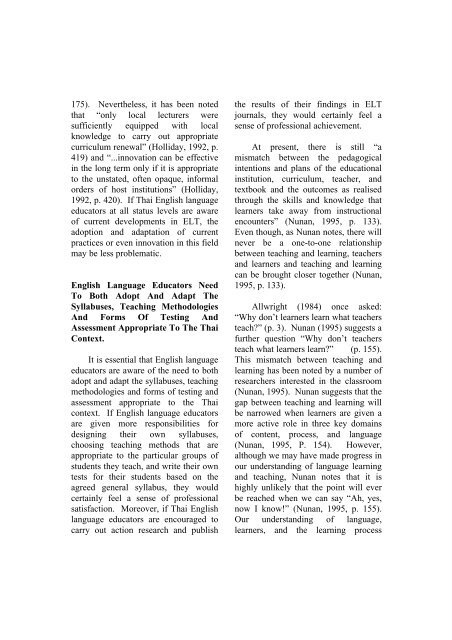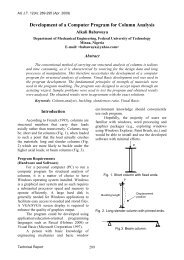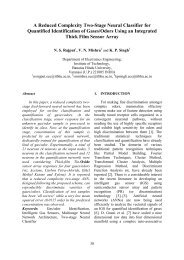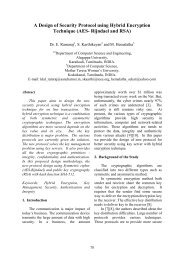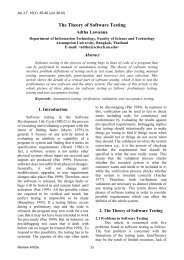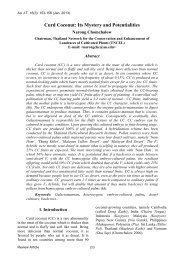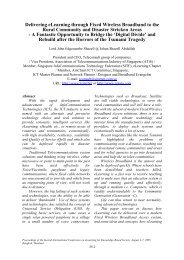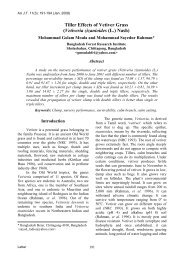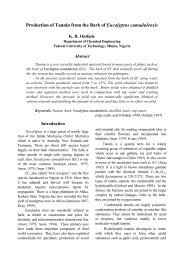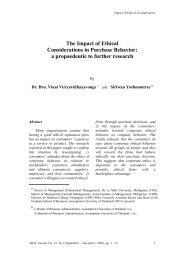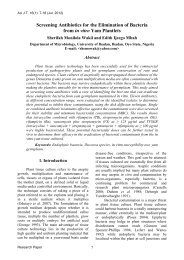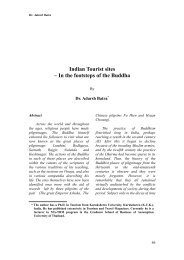PDF format - AU Journal - Assumption University of Thailand
PDF format - AU Journal - Assumption University of Thailand
PDF format - AU Journal - Assumption University of Thailand
You also want an ePaper? Increase the reach of your titles
YUMPU automatically turns print PDFs into web optimized ePapers that Google loves.
175). Nevertheless, it has been noted<br />
that “only local lecturers were<br />
sufficiently equipped with local<br />
knowledge to carry out appropriate<br />
curriculum renewal” (Holliday, 1992, p.<br />
419) and “...innovation can be effective<br />
in the long term only if it is appropriate<br />
to the unstated, <strong>of</strong>ten opaque, informal<br />
orders <strong>of</strong> host institutions” (Holliday,<br />
1992, p. 420). If Thai English language<br />
educators at all status levels are aware<br />
<strong>of</strong> current developments in ELT, the<br />
adoption and adaptation <strong>of</strong> current<br />
practices or even innovation in this field<br />
may be less problematic.<br />
English Language Educators Need<br />
To Both Adopt And Adapt The<br />
Syllabuses, Teaching Methodologies<br />
And Forms Of Testing And<br />
Assessment Appropriate To The Thai<br />
Context.<br />
It is essential that English language<br />
educators are aware <strong>of</strong> the need to both<br />
adopt and adapt the syllabuses, teaching<br />
methodologies and forms <strong>of</strong> testing and<br />
assessment appropriate to the Thai<br />
context. If English language educators<br />
are given more responsibilities for<br />
designing their own syllabuses,<br />
choosing teaching methods that are<br />
appropriate to the particular groups <strong>of</strong><br />
students they teach, and write their own<br />
tests for their students based on the<br />
agreed general syllabus, they would<br />
certainly feel a sense <strong>of</strong> pr<strong>of</strong>essional<br />
satisfaction. Moreover, if Thai English<br />
language educators are encouraged to<br />
carry out action research and publish<br />
the results <strong>of</strong> their findings in ELT<br />
journals, they would certainly feel a<br />
sense <strong>of</strong> pr<strong>of</strong>essional achievement.<br />
At present, there is still “a<br />
mismatch between the pedagogical<br />
intentions and plans <strong>of</strong> the educational<br />
institution, curriculum, teacher, and<br />
textbook and the outcomes as realised<br />
through the skills and knowledge that<br />
learners take away from instructional<br />
encounters” (Nunan, 1995, p. 133).<br />
Even though, as Nunan notes, there will<br />
never be a one-to-one relationship<br />
between teaching and learning, teachers<br />
and learners and teaching and learning<br />
can be brought closer together (Nunan,<br />
1995, p. 133).<br />
Allwright (1984) once asked:<br />
“Why don’t learners learn what teachers<br />
teach?” (p. 3). Nunan (1995) suggests a<br />
further question “Why don’t teachers<br />
teach what learners learn?” (p. 155).<br />
This mismatch between teaching and<br />
learning has been noted by a number <strong>of</strong><br />
researchers interested in the classroom<br />
(Nunan, 1995). Nunan suggests that the<br />
gap between teaching and learning will<br />
be narrowed when learners are given a<br />
more active role in three key domains<br />
<strong>of</strong> content, process, and language<br />
(Nunan, 1995, P. 154). However,<br />
although we may have made progress in<br />
our understanding <strong>of</strong> language learning<br />
and teaching, Nunan notes that it is<br />
highly unlikely that the point will ever<br />
be reached when we can say “Ah, yes,<br />
now I know!” (Nunan, 1995, p. 155).<br />
Our understanding <strong>of</strong> language,<br />
learners, and the learning process


